Published December 2019
Tewhakarewarewatangaoteopetauaawahiao is the full name of a Māori village located in Rotorua, New Zealand. Fortunately, the 37-letter name also has a slightly simpler abbreviation—Whakarewarewa. Whakarewarewa is part of the highly active geothermal area, the Rotorua Thermal Field, which was formed by a volcanic explosion 240,000 years ago. The Rotorua Thermal Field has over 500 hot springs and 65 geysers. The largest geyser, the Pōhutu Geyser, erupts up to 15 times a day.
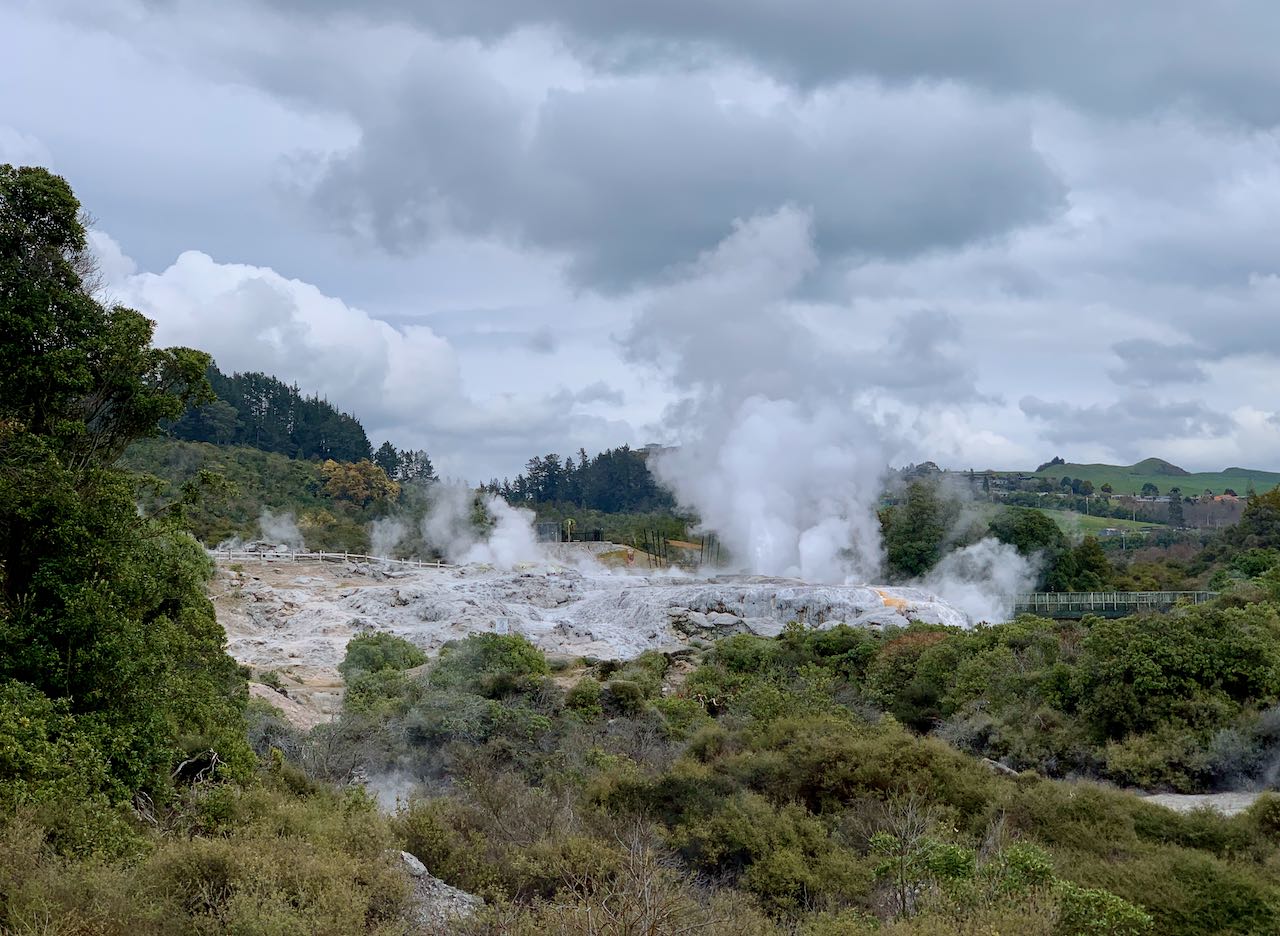
The area was populated in the 14th century by Māoris who came from other Pacific islands. The Māoris developed a way of life around the many hot thermal springs rising through the earth’s surface in the valley.
Today, Whakarewarewa is home to the Tūhourangi Ngāti Wāhiao people, and the villagers welcome visitors every day until 5 o’clock. After reading about Whakarewarewa, we were very curious to see firsthand what it is like in a geothermal Māori village.
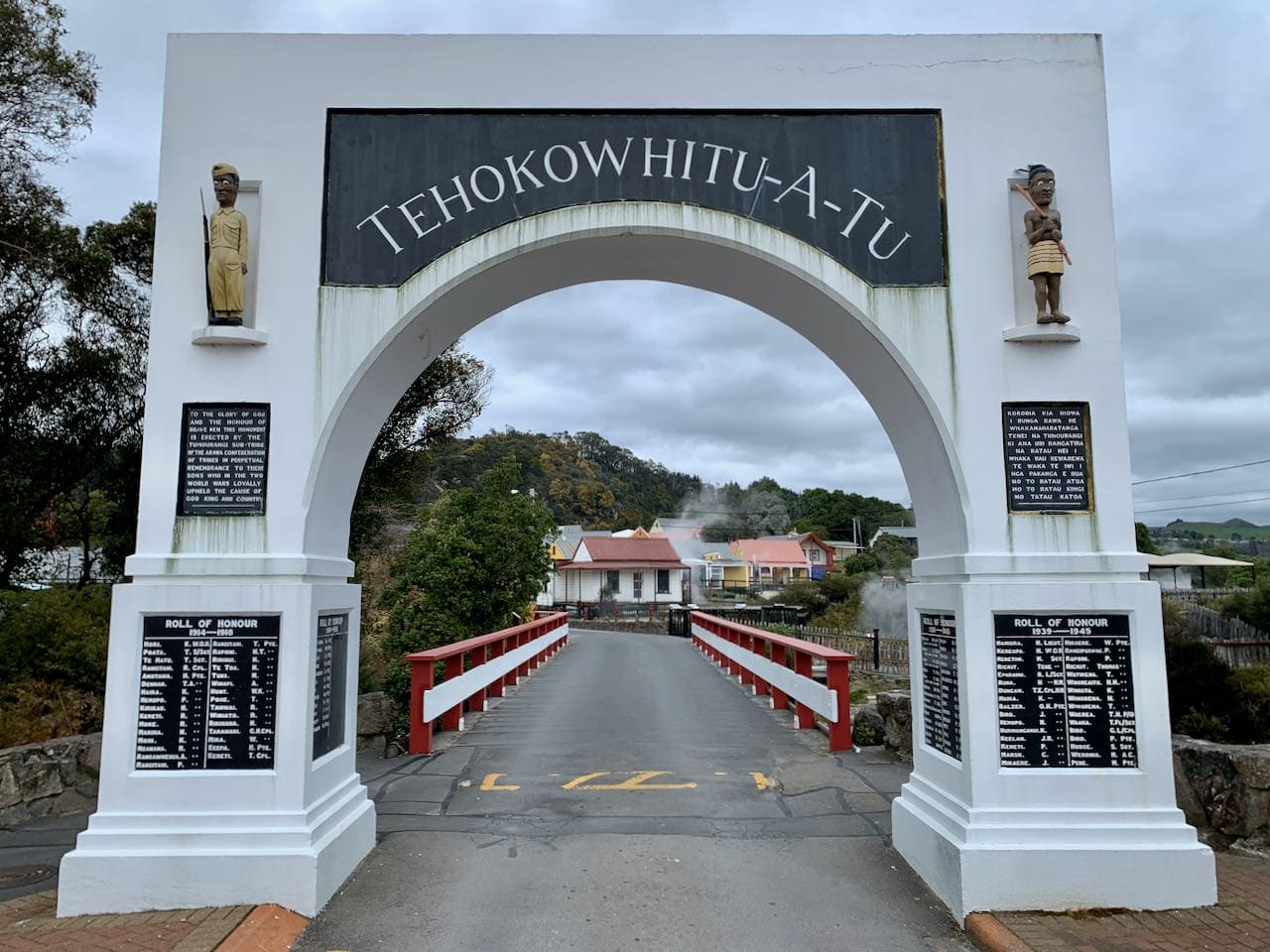
We stayed at the Holiday Inn Rotorua, conveniently located right at the entrance to the village. We timed our visit to see the earliest of the two daily cultural performances. On our way to the hall where the performance was to take place, we were intrigued by how the village was built. There were houses, shops, churches, and other buildings scattered around and between the hot springs. The steam from the springs rose from the ground, creating a very special atmosphere.
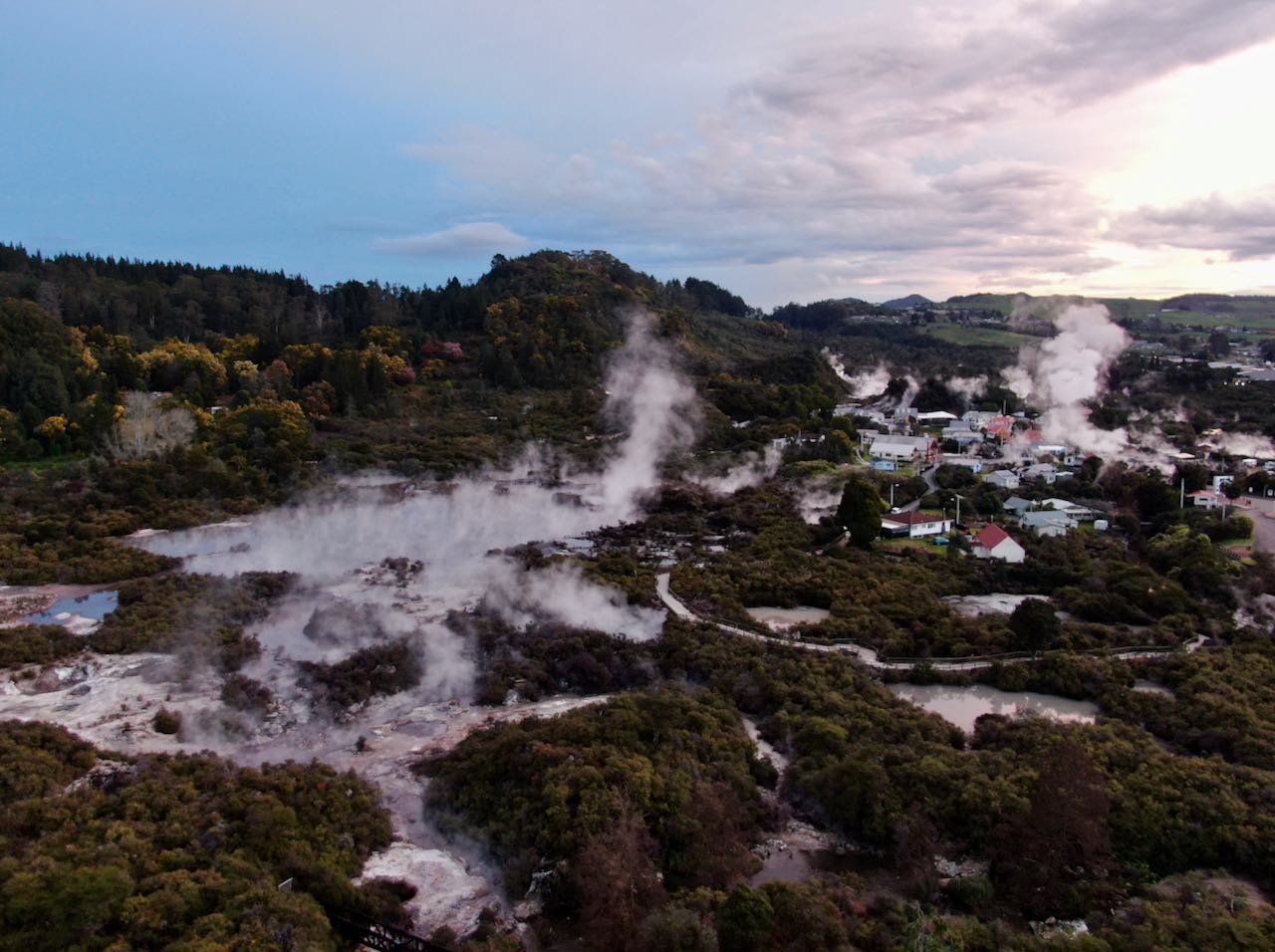
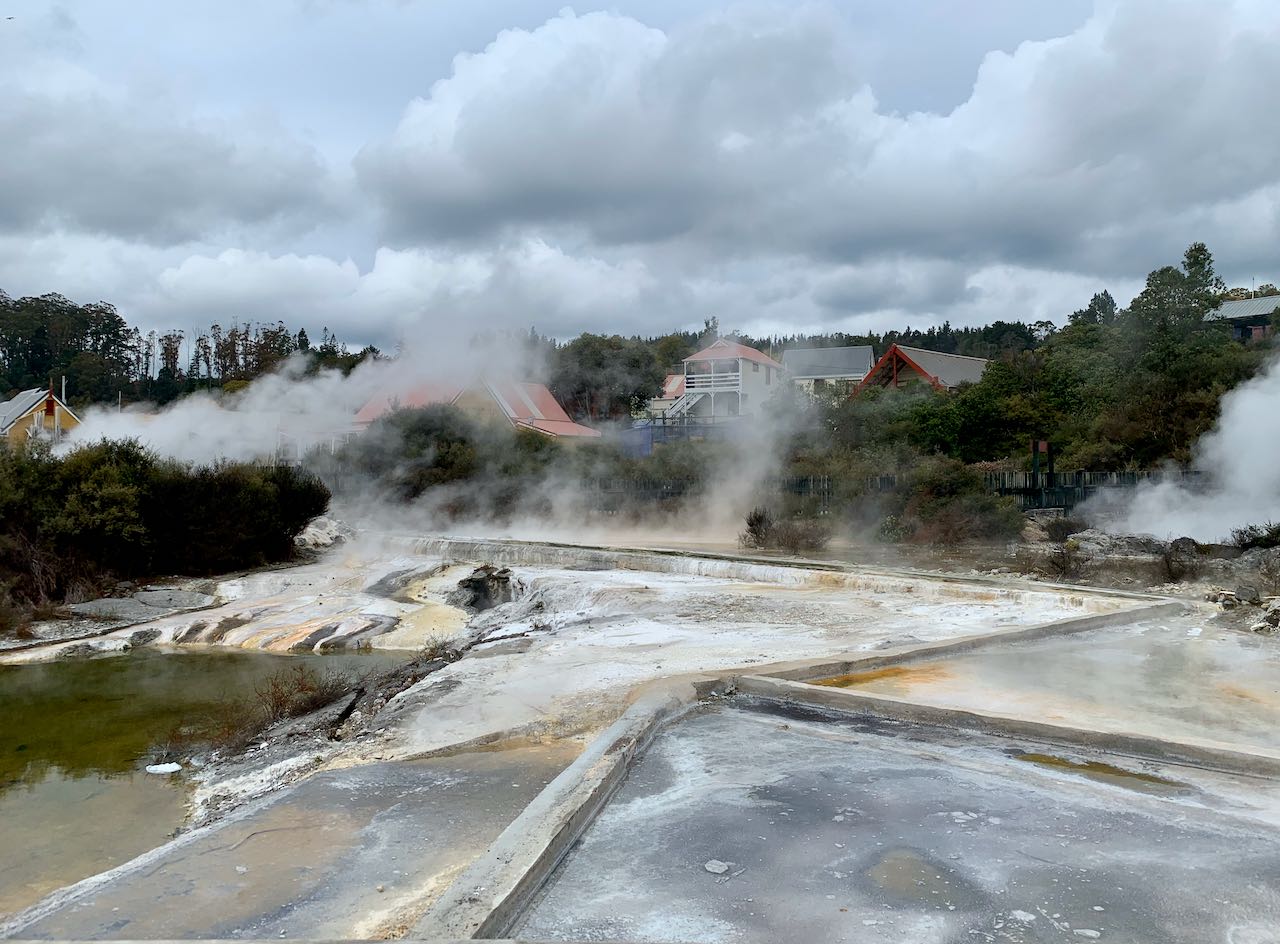
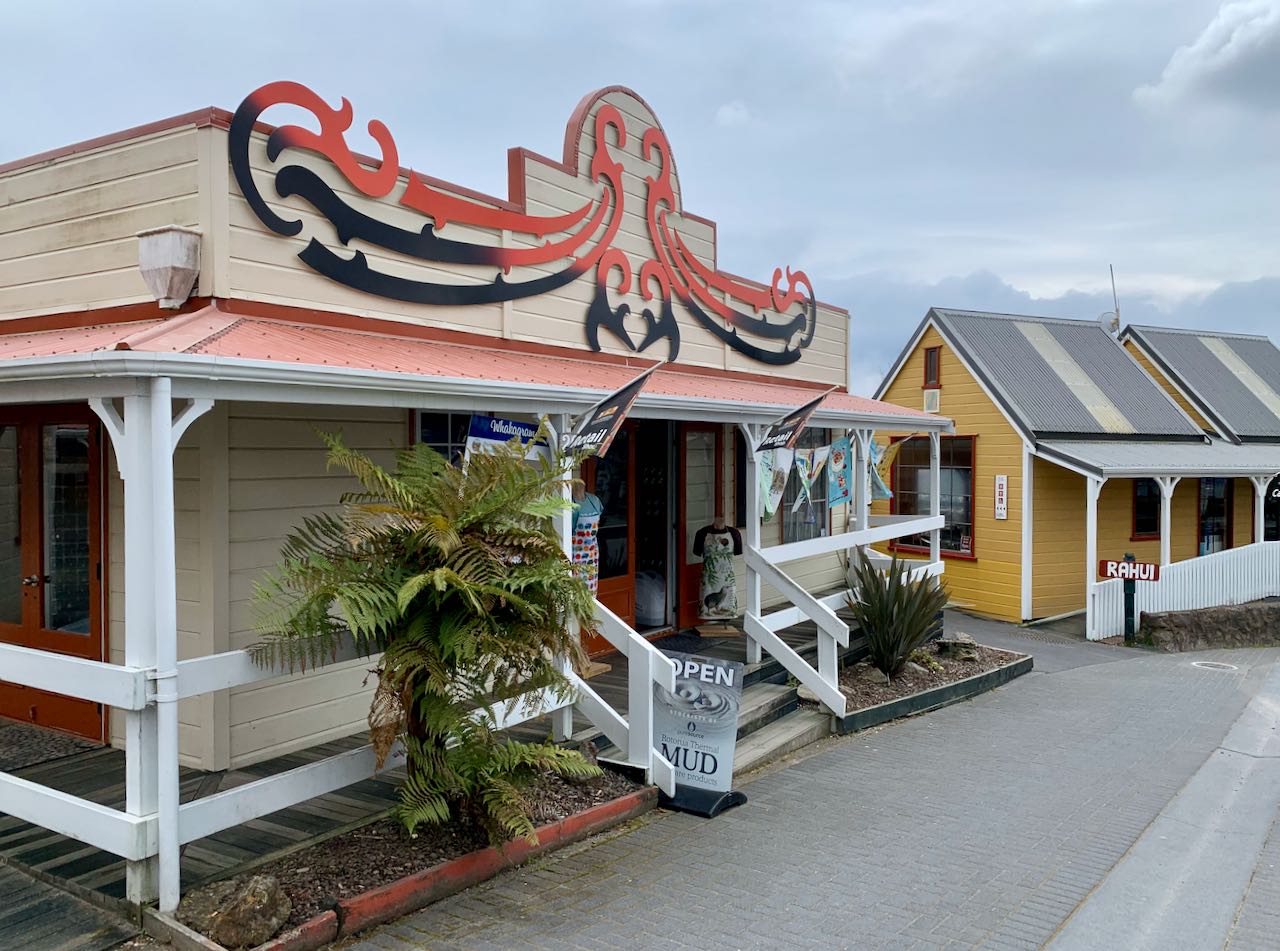
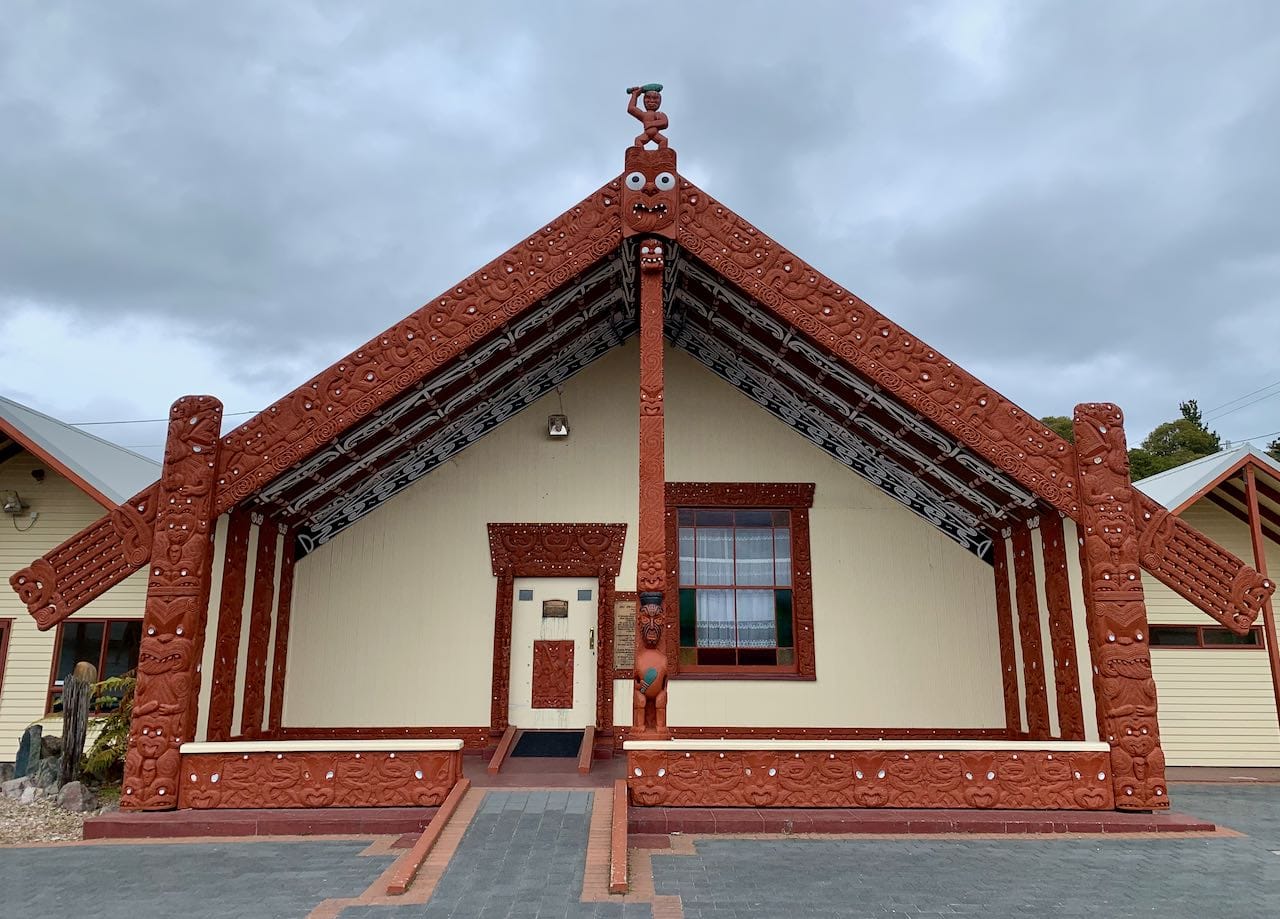
The 30-minute cultural performance was a tribute to the legacy of the villagers’ ancestors. We got to see traditional singing and dancing, and let ourselves get carried away by the very fascinating performance that was both moving and entertaining.
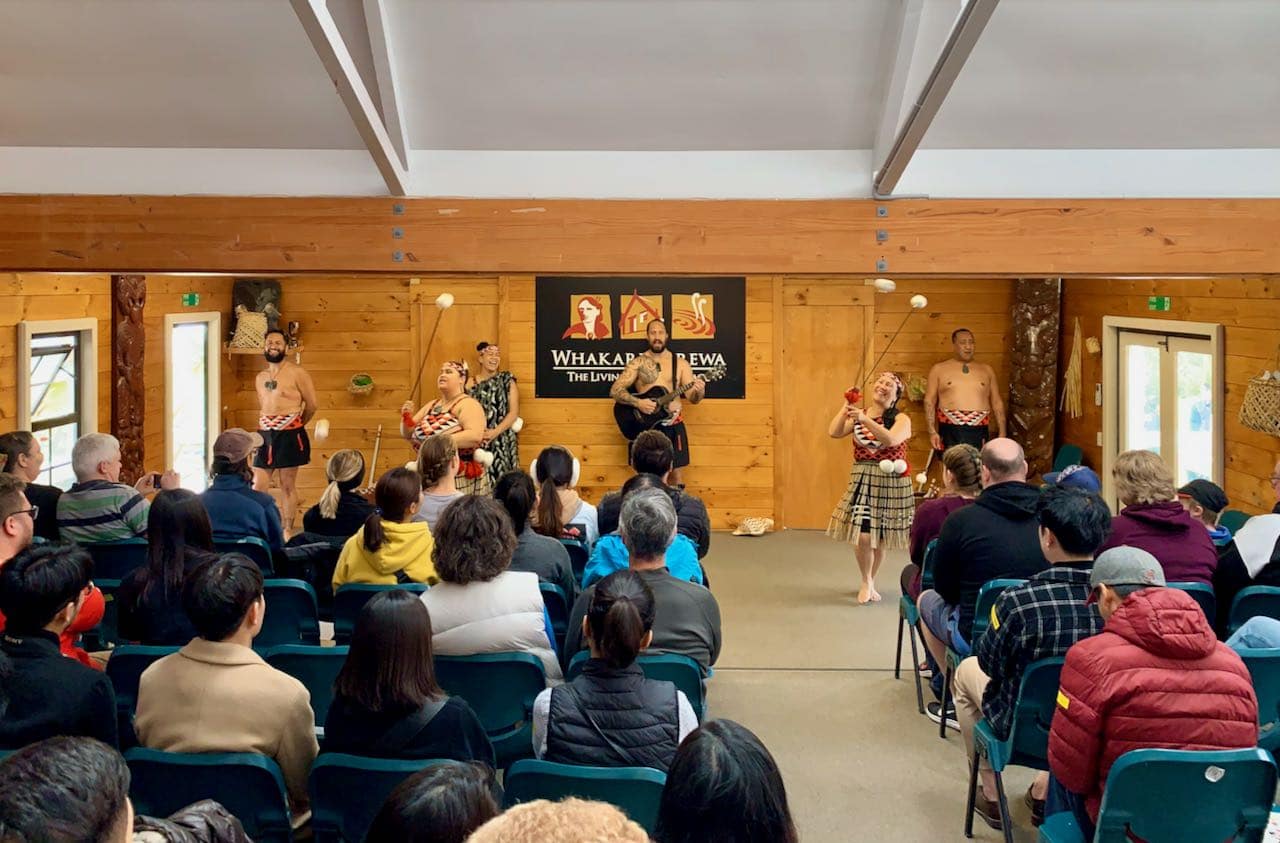
After the performance was over, we headed for the main entrance, from where the guided tour of the village was about to begin. Our guide, Paora aka Chief, is one of the top weavers of the tribe and was also an excellent guide. The next hour flew by as we learnt about how the Māoris interact with the thermal forces in the area and how life in the village has evolved over time. The hot pools play an important role in the daily life of the Tūhourangi Ngāti Wāhiao people, who, among other things, use them for cooking and bathing.
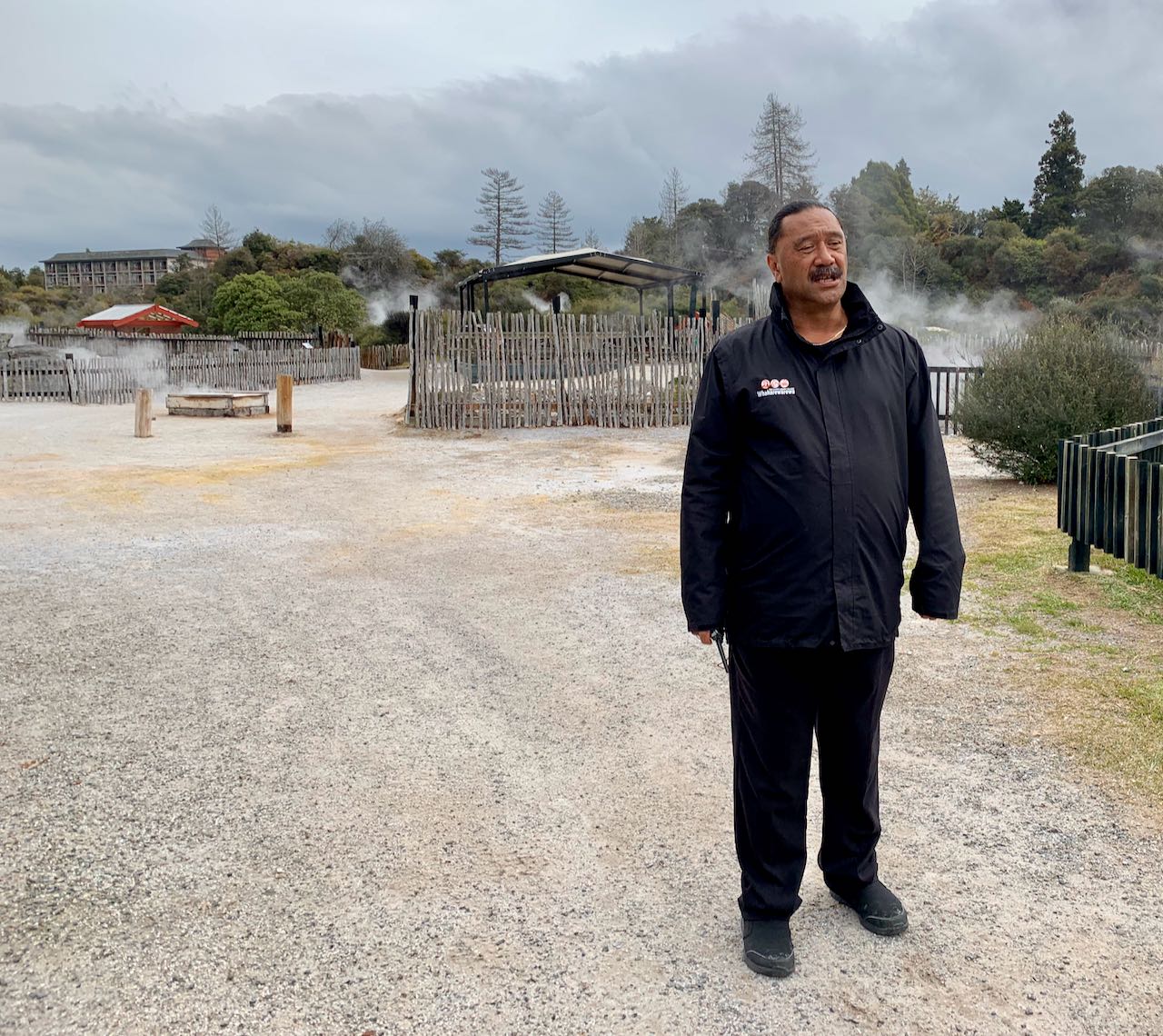
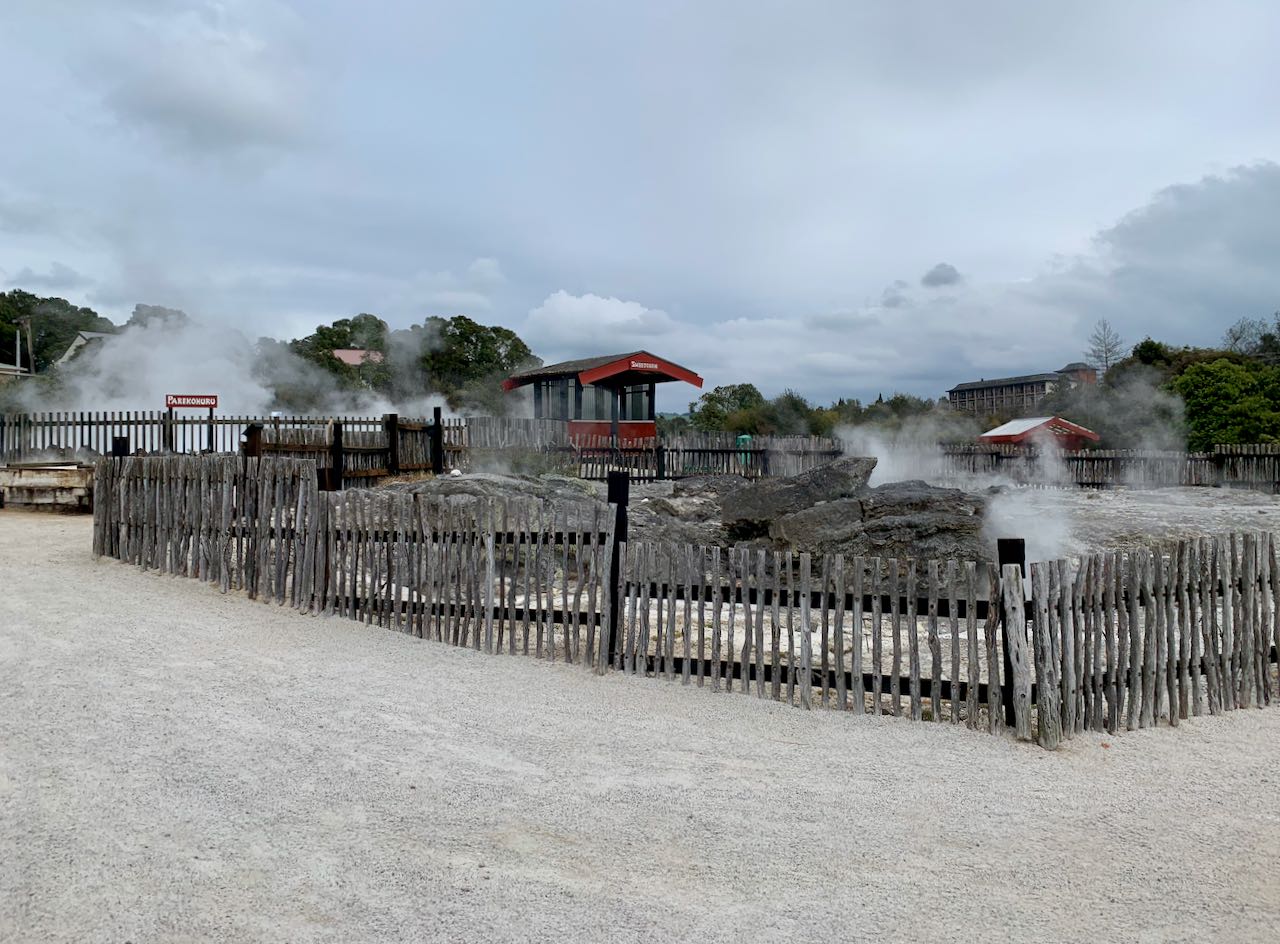
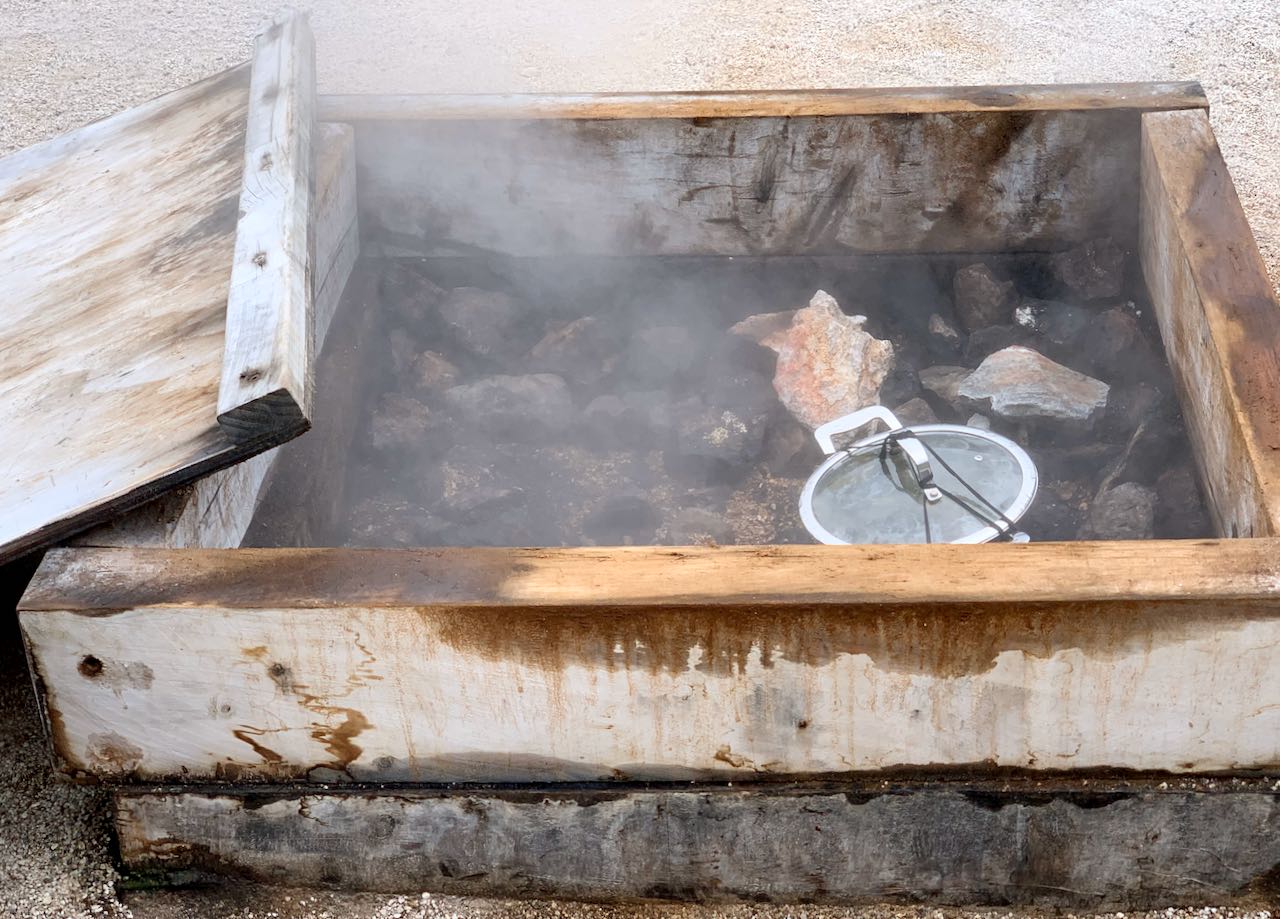
After the tour finished, we had lunch at the village cafe. Given the opportunity to try a real “Hangi” meal, we ordered a Hangi Pie. The meal was prepared using heat from the hot springs and was very tasty.
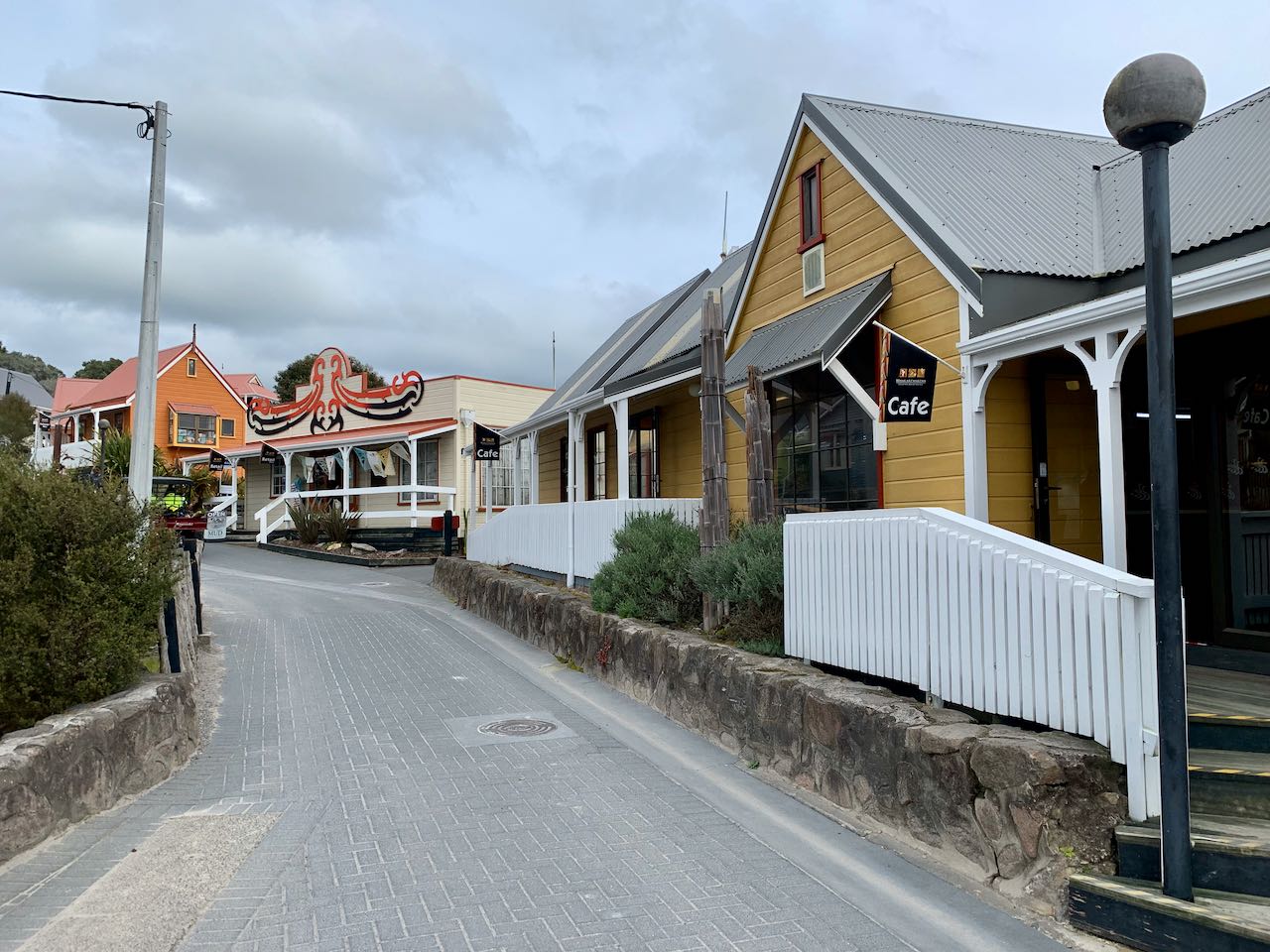
Since our tickets were valid all day, we decided to take a breather before starting on the final activity of the day—a self-guided tour of the trails around the geothermal area of Whakarewarewa.
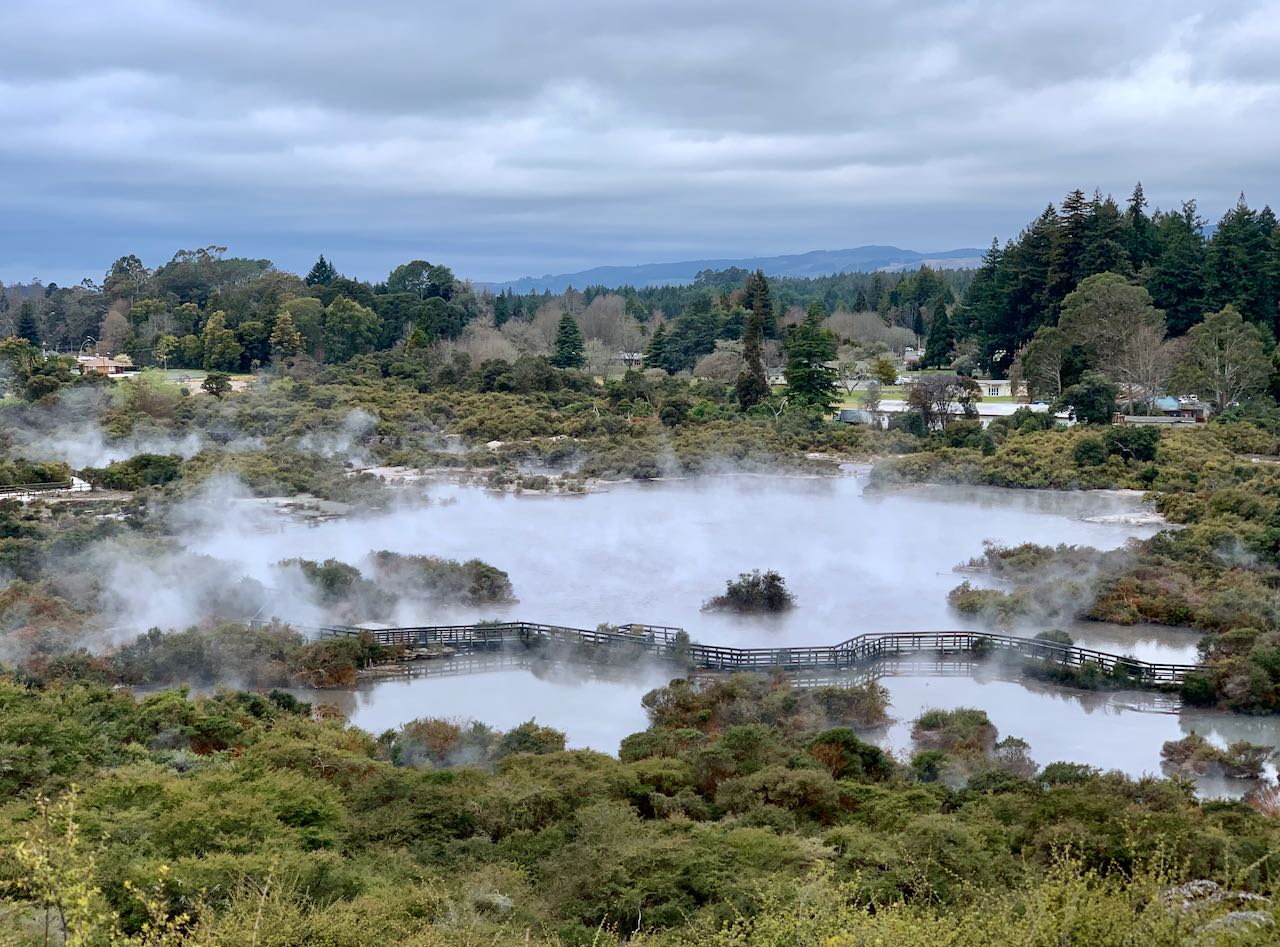
This turned out to be a really good idea since it meant that we got to have the dramatic surroundings all to ourselves. Around us were hot springs of different colors, boiling mud pools, and small waterfalls playing hide-and-seek behind the water vapor. The sulfur smell challenged our noses, and visibility changed from second to second as we strolled through the walkways that crossed the hot springs. It all felt almost like walking around in a boiling witch pot.
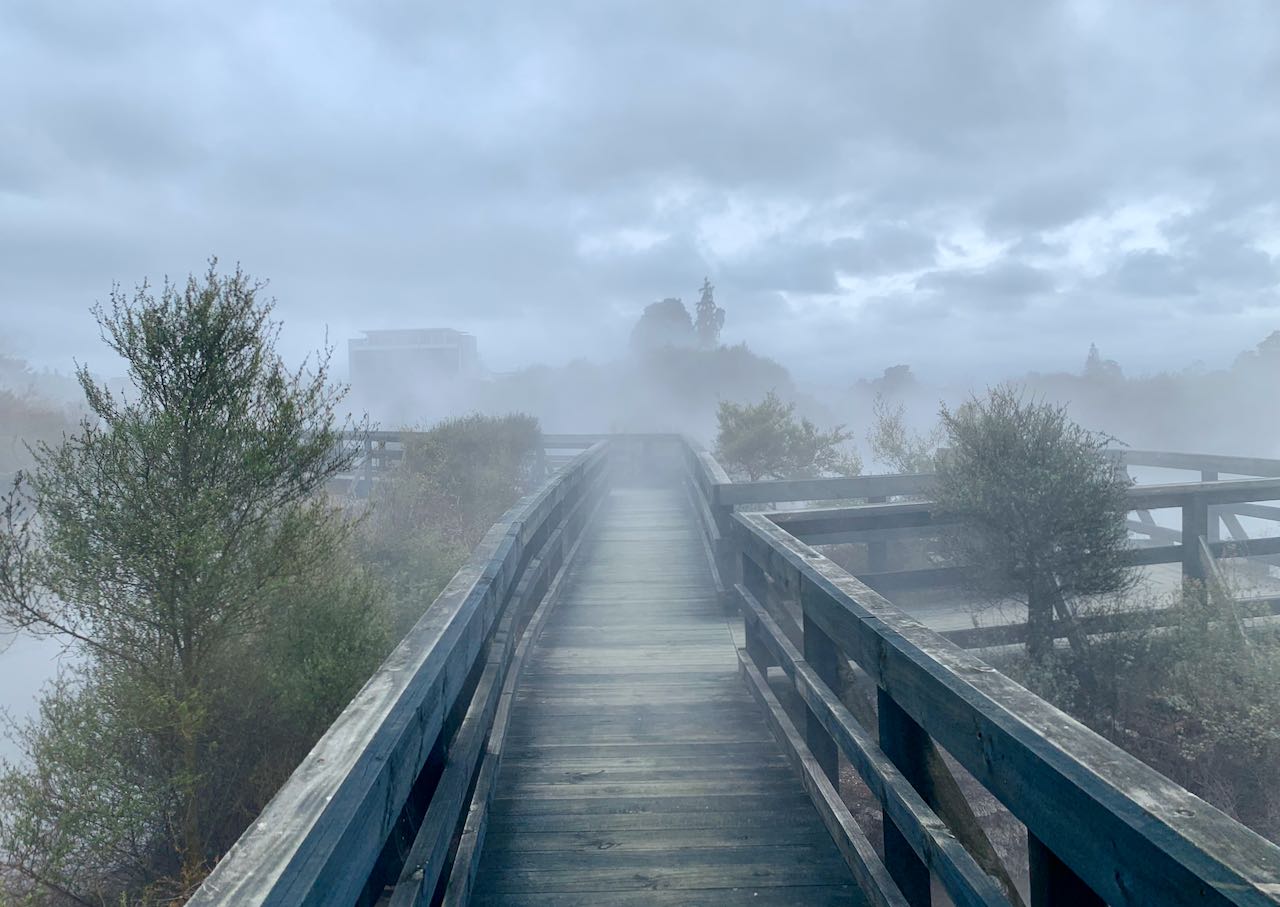
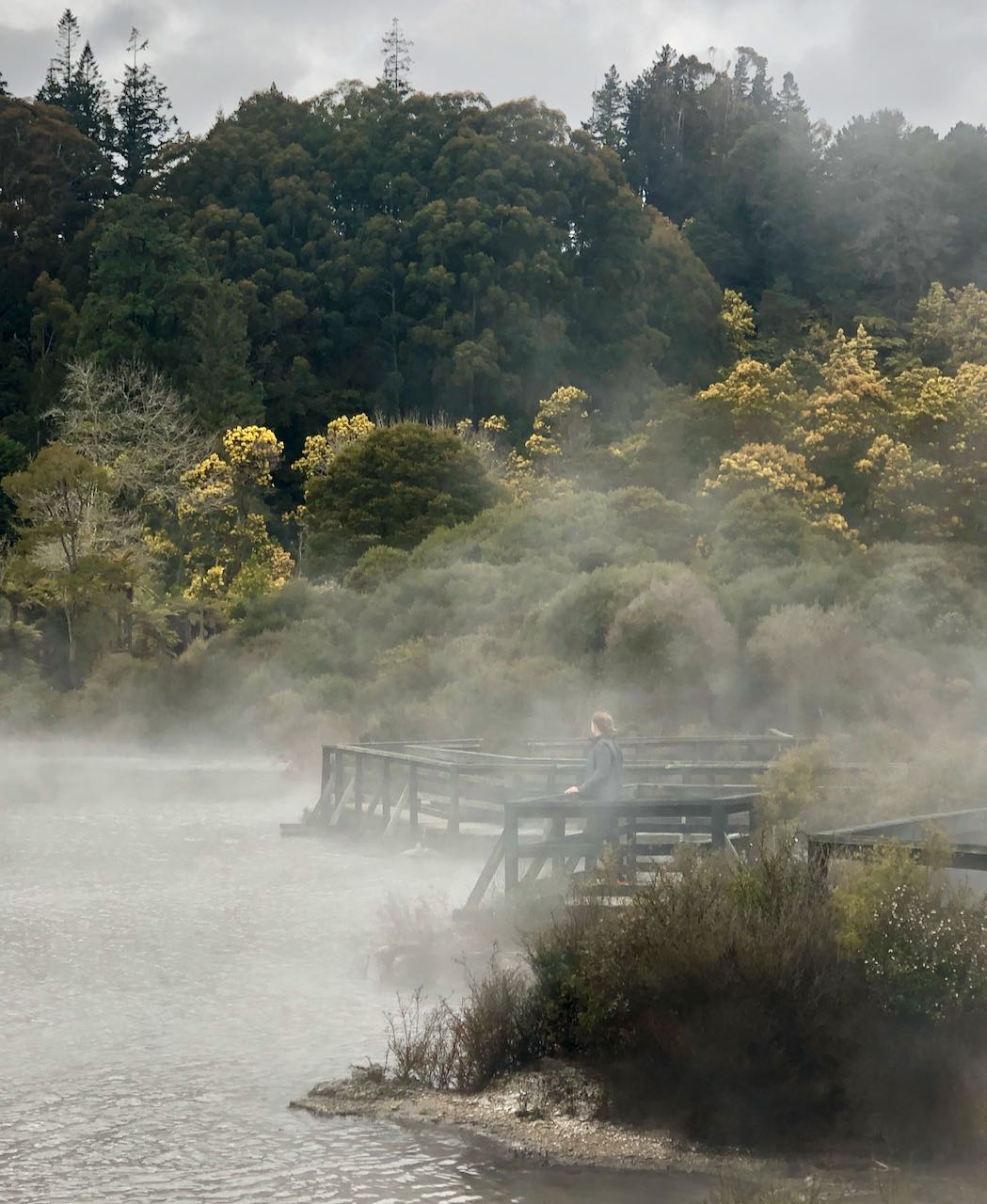
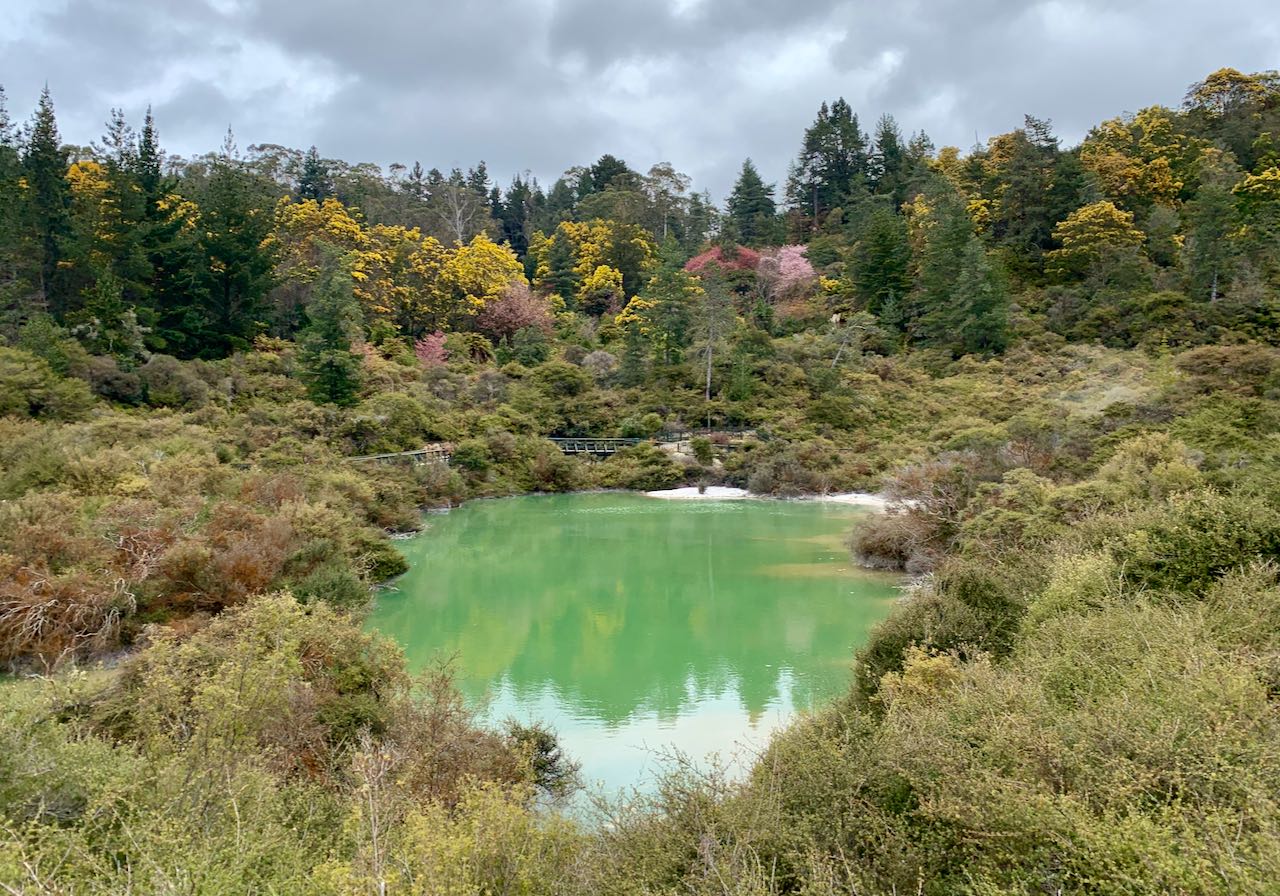
Visiting Whakarewarewa was definitely one of the biggest highlights of our four-week visit to New Zealand. The day we spent in the village gave us incredibly exciting insight into both the island’s past and present, and showed us a unique interaction between people and nature.
READ MORE: Singing in the Rain – A Magical Evening Banquet Tour at Hobbiton
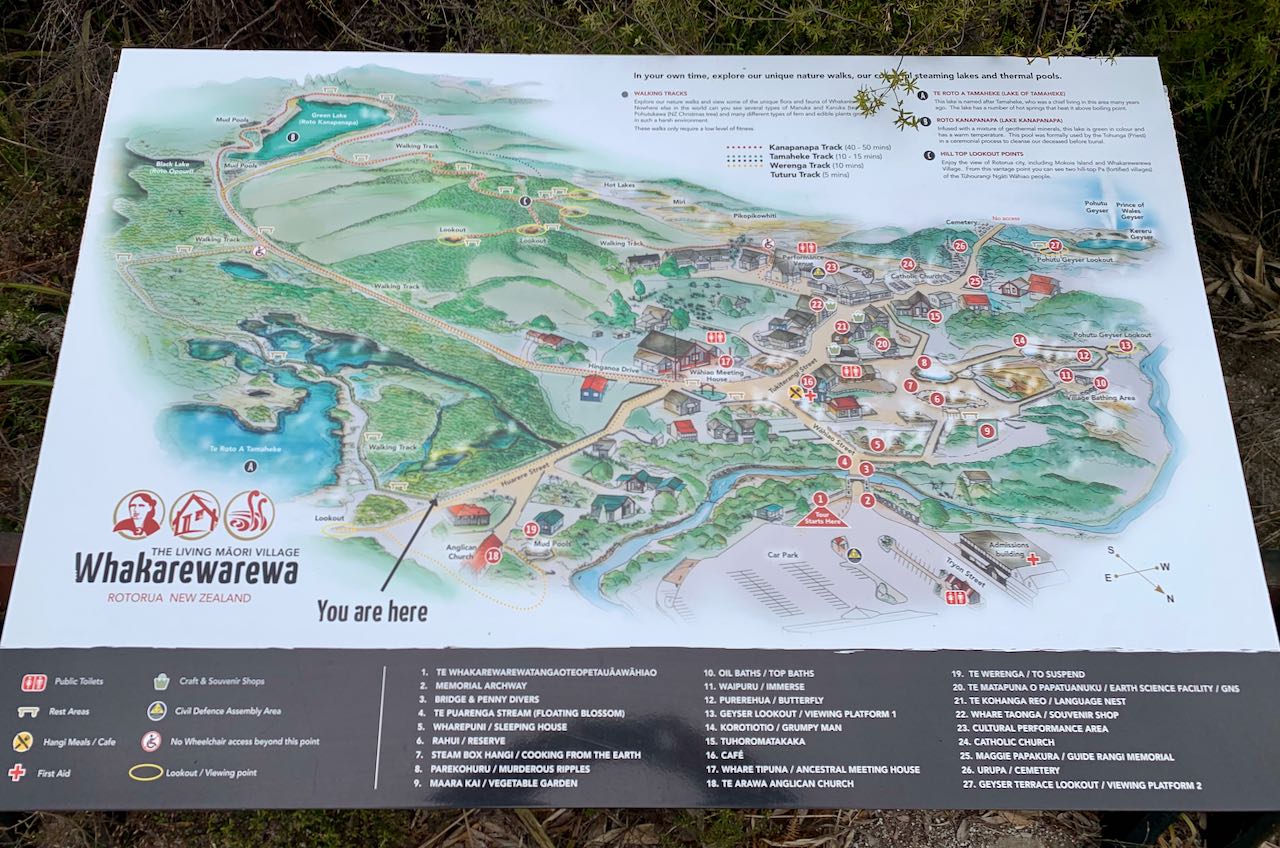
Practical information and tips:
- Whakarewarewa is located in Rotorua, a 2-hour drive from Auckland.
- The village is open every day (except Christmas Day) 8:30 a.m.–5 p.m.
- Tickets cost 45 NZD for adults and 20 NZD for children (5-15 years). Children under 5 years have free entry. A family pass (2 adults and up to 3 children) is available for 100 NZD. Tickets include full-day access during the opening hours, a cultural experience and a guided tour of the village. Meal packages are also available.
- The cultural experience is held at 11:15 a.m. and 2 p.m. daily. A third show is held at 12:30 p.m. during the summer (November–April).
Don’t miss!
-A self-guided tour of the trails around the geothermal area of Whakarewarewa.
